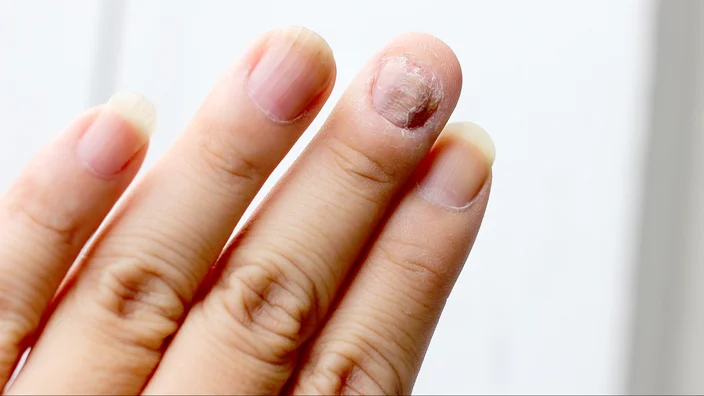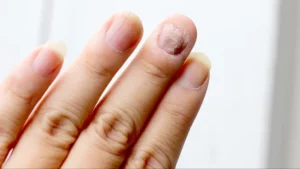Toenail fungus, medically known as onychomycosis, is a common condition affecting millions of Australians. But one question that often arises is whether toenail fungus can spread to fingernails. The short answer is yes, but the likelihood and rate of transmission depend on several factors. Understanding how fungal infections spread, their risk factors, and ways to prevent them is essential for maintaining healthy nails.
Is Toenail Fungus Contagious?
Toenail fungus is highly contagious. The fungi responsible for nail infections thrive in warm, moist environments, making communal areas like public showers, swimming pools, and gyms prime locations for transmission. If left untreated, toenail fungus can spread not only to other toenails but also to fingernails and even other parts of the body.
How Does Toenail Fungus Spread to Fingernails?
Toenail fungus spreads through direct and indirect contact. Some of the common ways it can transfer to fingernails include:
- Touching Infected Nails: If you frequently touch or pick at an infected toenail, the fungal spores can transfer to your fingernails.
- Using Contaminated Nail Tools: Clippers, nail files, and other grooming tools that have been used on an infected toenail can spread the fungus if not sanitised properly.
- Cross-Contamination Through Clothing and Bedding: Socks, shoes, towels, and bed sheets that come into contact with infected toenails can harbour fungal spores and contribute to the spread.
- Weakened Immune System: If your immune system is compromised, your body may struggle to fight off fungal infections, increasing the risk of cross-contamination.
Who Is at Risk?
Certain individuals are more susceptible to developing fungal infections, including:
- People with diabetes or circulatory issues
- Those with weakened immune systems
- Individuals who frequently wear closed-toe shoes
- People who sweat excessively
- Those who use public showers and swimming pools regularly
Symptoms of Toenail and Fingernail Fungus
Recognising the early signs of fungal infections can help prevent their spread. Symptoms include:
- Discolouration – Nails may turn yellow, brown, or white
- Thickening – Infected nails often become thick and brittle
- Brittle or Crumbling Texture – The nail may break easily or develop rough edges
- Separation from the Nail Bed – In severe cases, the nail may lift from the skin
- Foul Odour – A persistent smell can indicate a fungal infection
Can You Prevent the Spread of Toenail Fungus to Fingernails?
Preventing fungal infections requires a proactive approach to hygiene and nail care. Here are some effective ways to stop toenail fungus from spreading:
1. Maintain Good Foot and Hand Hygiene
- Wash your feet and hands regularly with antibacterial soap and dry them thoroughly.
- Keep nails trimmed and clean to minimise fungal growth.
2. Avoid Sharing Personal Items
- Do not share nail clippers, files, or footwear with others.
- Always use clean towels and change socks daily.
3. Choose Breathable Footwear
- Wear shoes made of breathable materials like leather or mesh.
- Avoid wearing tight, closed-toe shoes for extended periods.
4. Disinfect Nail Tools and Footwear
- Sterilise nail clippers and files with alcohol after each use.
- Use antifungal sprays or powders in shoes to kill spores.
5. Wear Protective Footwear in Public Areas
- Always wear thongs or waterproof sandals in communal showers, locker rooms, and pool areas.
6. Use Antifungal Treatments
- If you suspect a fungal infection, start treatment early with over-the-counter antifungal creams, sprays, or medicated nail lacquers.
- In severe cases, prescription oral antifungal medications may be necessary.
What Are the Best Treatment Options for Toenail and Fingernail Fungus?
If toenail fungus has spread to your fingernails, seeking prompt treatment is essential. Common treatment options include:
- Topical Antifungal Treatments: These include creams, nail lacquers, and medicated nail polishes.
- Oral Antifungal Medications: Prescription medications like terbinafine and itraconazole can effectively clear fungal infections.
- Laser Therapy: A non-invasive treatment that targets and destroys fungal spores without damaging the nail.
- Surgical Nail Removal: In extreme cases, a podiatrist may recommend removing the infected nail to allow for healthy regrowth.
When to See a Podiatrist
If you have persistent toenail fungus that is spreading to your fingernails or causing pain and discomfort, it is best to seek professional treatment. At ModPod Podiatry, we offer comprehensive solutions tailored to your needs, ensuring optimal foot and nail health.
Final Thoughts
Toenail fungus is not just a cosmetic issue—it is a contagious infection that can spread to your fingernails if not managed properly. By following good hygiene practices, taking preventive measures, and seeking timely treatment, you can protect both your toenails and fingernails from fungal infections. If you are dealing with stubborn nail fungus, consult with a podiatrist at ModPod Podiatry for expert guidance and treatment options.
For professional podiatry services and fungal nail treatments, contact ModPod Podiatry today!










